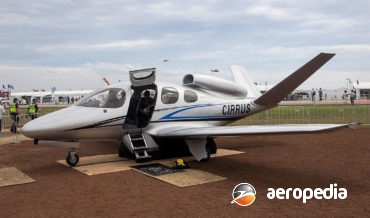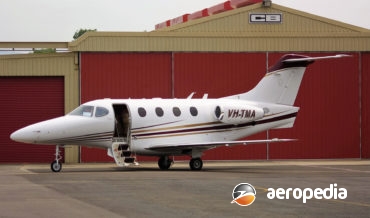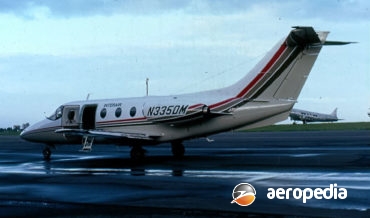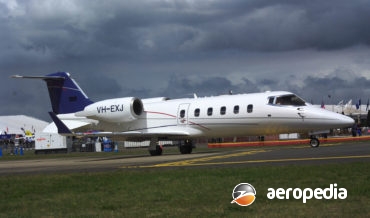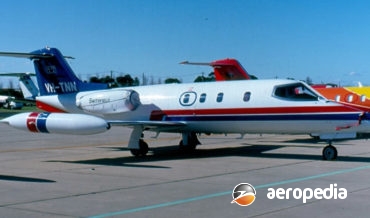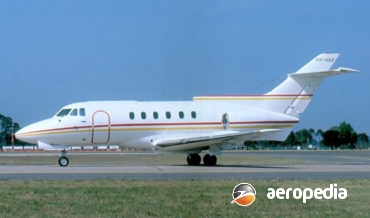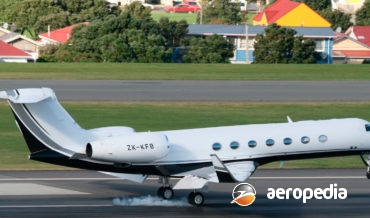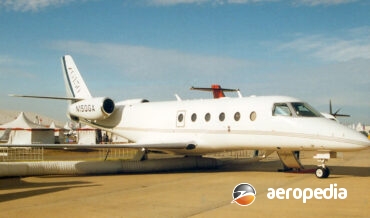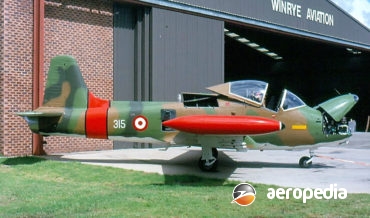All Contents
Contents
This is one of a number of very-light private jet aircraft offered on the world market and is a seven-seat composite design with a single Williams FJ33-4 turbofan mounted above the cabin and exhausting between the V-shaped tail.
David C. Eyre
- May 17, 2019
Raytheon in 1980 acquired the Beech Aircraft Corp and in 1994 merged Beech with its own company, Raytheon Corporate Jets which at that time was building the Hawker 800 series of business jets.
David C. Eyre
- May 8, 2019
Following the success of the MU-2 series, Mitsubishi in 1977 embarked on the design of a new business jet known as the MU-300, this being a conventional low-wing aircraft with a T-tail powered by two Pratt & Whitney JT-15D turbofans mounted on the rear fuselage
David C. Eyre
- May 8, 2019
The Learjet 60 was announced on 3 October 1990 as the successor to the Learjet 55C, the first proof-of-concept aircraft flying with a Pratt & Whitney PW 305 turbofan on 18 October 1990, flying with two PW 305s in May 1992.
David C. Eyre
- May 8, 2019
For many years the Learjet was marketed as the fastest business jet in production. It was designed by William P Lear in Switzerland as the SAAC-23, being eventually produced in Wichita, Kansas, the prototype Model 23 flying for the first time on 7 October 1963.
David C. Eyre
- May 8, 2019
The Learjet 31 is one of a series of business and executive jet aircraft produced by Learjet, which is a subsidiary of Bombardier Aerospace.
David C. Eyre
- May 8, 2019
For many years the Learjet was marketed as the fastest business jet in production, and more than 1,500 examples of a variety of models have been built.
David C. Eyre
- May 8, 2019
The JS-3 Rapture is one of a series of high performance gliders built in South Africa by Jonker Sailplanes the first model being the JS-1, the prototype of which flew for the first time on 12 December 2006 and the company immediately became known as a builder of world-class sailplanes.
David C. Eyre
- May 8, 2019
The Series 600 was introduced to the market in 1971 and was powered by two 3,750 lbst Viper 600 series engines with a two-stage turbine.
David C. Eyre
- May 8, 2019
In 2008 Gulfstream announced it was going to introduce a new long-range business aircraft known as the 650 to fill a niche in the corporate market between the company’s own G550 and the Bombardier Global XRS, and the Boeing Business Jet and Airbus Corporate Jetliner.
David C. Eyre
- May 8, 2019
In recent years Gulfstream, part of the General Dynamics company, has built and marketed a range of executive jets to meet customer demands and has brought examples of the various models to Australasia on demonstration tours.
David C. Eyre
- May 8, 2019
In December 1986 Bombardier purchased Canadair from the Canadian Government, and launched the Challenger business jet programme.
David C. Eyre
- May 8, 2019
By late 1971 Bede Aircraft claimed it had 4,300 orders for the BD-5 series but found changes had to be made to the design as flight testing revealed the V-tail was unstable.
David C. Eyre
- May 8, 2019
The Hunting Percival Jet Provost was developed as a private venture from the piston-engined Provost and was flown for the first time on 26 June 1954.
David C. Eyre
- May 8, 2019
Recent Comments
Archives
Categories
- No categories
Categories
- No categories
Latest Posts
Newsletter

